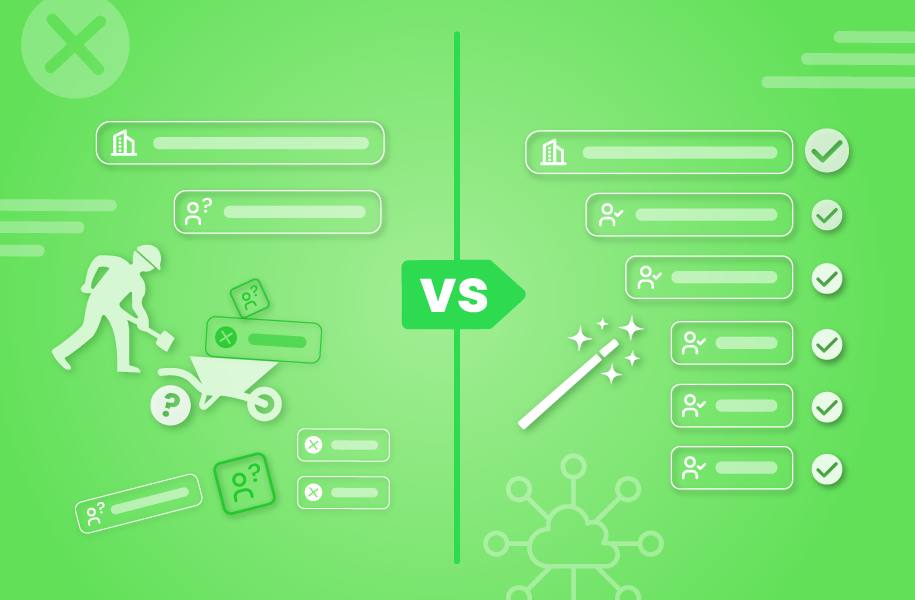At Traction Complete we’re big fans of account-based marketing (ABM) and the SiriusDecisions Demand Unit Waterfall. In the ABM world, it helps to have an uber-practical framework for managing and measuring the demand gen process.
In the past few years technology transformations have enabled organizations to scale their ABM campaign efforts. ABM campaigns with 50 accounts could scale upwards with automation software to 500 accounts. Yet problems arose when teams were locked into this rigid way of operating. Short-sighted KPIs and confusing acronyms muddied the water and constrained an organization’s ability to innovate. I’m talking about KPIs that focus marketing on increasing lead volume while inexplicably driving lead quality down for sales.
So how can organizations address this misalignment today?
In this article, we’ll highlight the SiriusDecisions Demand Unit Waterfall. We’ll go over what it is, what it means for organizations, and explain how you can implement the model within your revenue operations.
What is the SiriusDecisions Demand Waterfall?
For years the SiriusDecisions framework has been used to manage the demand generation process. The first model was praised for its clarity and simplicity. Its wide adoption helped demand generation marketers visualize customer acquisition in a straightforward funnel.
The past model, while immensely valuable at the time, proved only to emphasize the chasm between marketing and sales as consumer behavior evolved. The simple truth was the way organizations bought services and solutions changed.
Inside organizations it’s not uncommon for sales departments to operate on accounts while marketing teams concentrate on leads and individual personas. What was needed was a model that both sales and marketing could rally behind together.
In 2017 the newly updated SiriusDecisions Demand Unit Waterfall was developed to take the model to the next level.
How does this model help improve the marketing and sales process?
To bridge the gap between sales and marketing, SiriusDecisions identifies the “Demand Unit”. Instead of leads and accounts and the hidden connections between one another, there was a shift towards a singular unit. It grew out of the fact that in B2B scenarios, the “buyer” is a group of decision-makers. A single account could have more than one demand unit with different purchase needs. So it’s important to understand how a specific demand unit could influence your approach.
Notice how there is no distinction between stages for marketing and sales. Instead, the model has both teams work together to reach and convert the demand units across each stage.
Let’s talk about the updated SiriusDecisions model diagram below.
Target Demand – This stage defines the number of potential demand units we believe exist for our solution in the market. In this planning stage, you’ll be asking, “What types of accounts are ideal for our solutions or services?”
Active Demand – Once you’ve landed on your ideal customer profile, the Active Demand stage measures the number of companies that are ready to buy in the near future.
Engaged Demand – Of the number of companies chosen in the previous stage, how many have interacted with you?
Prioritized Demand – Take all of the companies that have engaged with you and organize them by priority.
Qualified Demand – At this stage human interaction is required. Sales will reach out to key contacts within the accounts. To convert interest into opportunity at this stage sales will need real account insights to help drive meaningful engagements.
Pipeline Opportunity Stage – At this stage sales should be able to assign a close date and a dollar value to the opportunity.
Closed Opportunity Stage – Finally, the opportunity is closed and there’s moolah (revenue) to show for it.
How can organizations implement the SiriusDecisions model?
According to Senior Research Director Kerry Cunningham, SiriusDecisions sees real value in the third-party data that is available with new technologies in the market. Implementing technologies that collect purchase intent information can provide a much more holistic view of the active demand for your offering.
It’s with third-party data that this model becomes exponentially more interesting. First, it provides a much more accurate read on demand in the marketplace. And second, it can validate what you’re already doing to better focus your team on the demand units most likely to close. We’re talking about software tools that identify anonymous web visitors, third-party sales intelligence, or software that automates your lead management by routing and matching new leads to known accounts.
A tool like Traction Complete automates the lead management process by matching leads to known accounts so sales and marketing can identify what is impacting the demand unit. It fills in the missing gaps and seemingly unrelated connections between leads and accounts so that valuable inquiries are not missed or ignored.
Takeaways
The SiriusDecisions Demand Unit Waterfall has taken the necessary steps to evolve alongside the way we do business today. Intercepting buying intent has become more of a challenge for organizations with so many ways for consumers to engage.
By combining new technologies with a clear and simple approach to ABM any organization can operationalize the strategy. We hope organizations who have been on the fence about tackling an ABM strategy can see a clear path forward with this guide. And for those who have been practicing ABM for years, the Demand Unit Waterfall can help make your process better.
Looking for more ways to truly operationalize your ABM?
Check out our on-demand webinar where you will learn how to go deeper in your ABM with the right tools and tactics to effectively produce results and truly operationalize your strategy.




